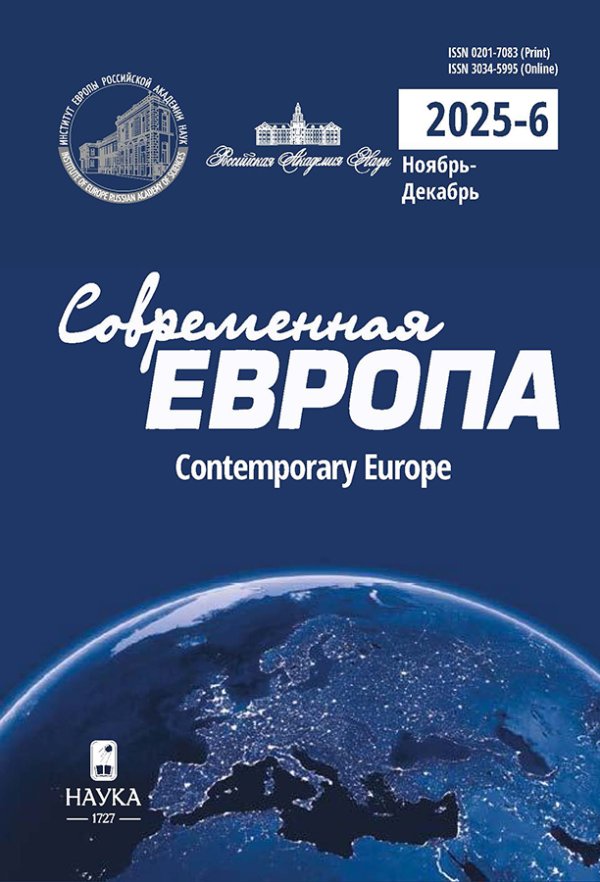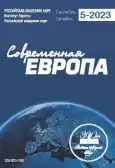New religious movements as an object of scientific study in modern Italy
- Authors: Yazkova V.E.1
-
Affiliations:
- Institute of Europe RAS
- Issue: No 5 (119) (2023)
- Pages: 133-146
- Section: Articles
- URL: https://journals.rcsi.science/0201-7083/article/view/142233
- DOI: https://doi.org/10.31857/S020170832305011X
- EDN: https://elibrary.ru/YAHWIW
- ID: 142233
Cite item
Full Text
Abstract
Keywords
About the authors
Veronika Evgen'evna Yazkova
Institute of Europe RAS
Email: yazkova@yandex.ru
Moscow, Russia
References
- Антонов К.М. (2017) Нужно ли нам "бороться с сектами"? Размышления о работе церкви в области нетрадиционной религиозности. Сектоведение. Под ред. В.А. Мартиновича. Т. 6. Издательство Минской духовной академии, Минск, Беларусь. С. 18-44.
- Кантеров И.Я. (2007) Новые религиозные движения в России (религиоведческий анализ). МГУ им. М.В. Ломоносова, Москва. 472 с.
- Лункин Р.Н. (2008) Церковь Виссариона: божество с человеческими страстями. Русское ревью. Кестонский институт. № 30. URL: https://web.archive.org/web/20150111141015/http://www.keston.org.uk/_russianreview/edition31/03vissarion.html
- Филатов С.Б. (2002). Новые религиозные движения - угроза или норма жизни? Религия и общество: Очерки религиозной жизни современной России. Отв. ред. и сост. С.Б. Филатов. Летний сад, Санкт-Петербург. С. 401-449. URL: https://web.archive.org/web/20131230232248/http://www.keston.org.uk/encyclo/20%20Sects.html
- Филиппов Б.А. (2015) О волне духовного напряжения конца 60-х гг. XX в. - начала XXI в. Вестник ПСТГУ I: Богословие. Философия. Вып. 5(61). С. 112-130.
- Bigliardi S. (2015) Che cosa sono, come funzionano e che cosa ci insegnano i nuovi movimenti religiosi? NonCredo. 39. P. 44-47.
- Champion F., Cohen M. (1999) Sectes et democratie. Editions de Seuil, Paris, France. 400 p.
- Cipriani R. (1997) Manuale di sociologia della religione. Edizioni Borla, Roma, Italy. 252 p.
- Di Marzio R. (2019) Il movimento antisette: storia, caratteristiche e attivismo. Coscienza e liberta. No. 57-58. URL: https://coscienzaeliberta.it/testimonianze/il-movimento-anti-sette-storia-caratteristiche-e-attivismo-raffaella-di-marzio-n-57-58-anno-2019/(accessed: 22.05.2023).
- Gatto Trocchi C. (2022) Nuovi Culti e Movimenti religiosi. URL: http://www.corsodireligione.it/religioni/movimenti%20e%20culti/nmr_2.html
- Hargrove B. (1983) Social Sources and Consequences of Brainwashing Controversy. The Brainwashing/Deprogramming Controversy: Sociological, Psycological, Legal and Historical Perspectives. Ed. by D.G. Bromley, J.T. Richardson. The Edwin Mallen Press, New York, USA. P. 299-308.
- Introvigne M. (1991) La sfida delle Sette o nuovi movimenti religiosi: un approccio pastorale. Cristianita. No. 195-196. URL: https://alleanzacattolica.org/la-sfida-delle-sette-o-nuovi-movimenti-religiosi-un-approccio-pastorale/(accessed: 21.05.2023).
- Introvigne M. (1993) Il movimento "anti-sette" laico e il movimento "contro le sette" religioso: strani compagni di viaggio o futuri nemici? Cristianita. No. 217. URL: https://alleanzacattolica.org/il-movimento-anti-sette-laico-e-il-movimento-contro-le-sette-religioso-strani-compagni-di-viaggio-o-futuri-nemici/(accessed: 17.05.2023).
- Introvigne M. (1994) L'Opus Dei e il movimento anti-sette. Cristianita. No. 229. P. 3-12.
- Introvigne M., Zoccatelli P.L. (2006) La questione delle "sette". Le religioni in Italia. URL: https://cesnur.com/la-questione-delle-sette-2/(accessed: 23.05.2023).
- Mat-Hasquin M. (1983) Les sectes contemporaines. Editions de l'Universite de Bruxelles, Bruxelles, Belgium. 119 p.
Supplementary files










